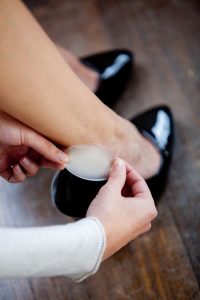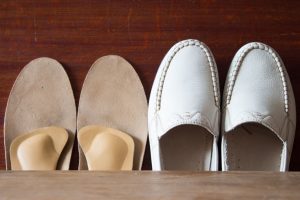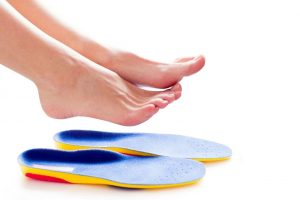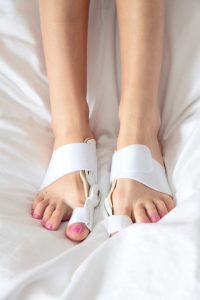High heels, sore feet, and insoles seem to be a vicious circle, which is always closely connected. If you wear high heels too much, your feet will hurt. Naturally, your feet will be relieved by insoles. However, not many people know that different foot shapes such as high arched feet, flat feet, hallux valgus, and other suitable insoles are also different. If you want to wear high heels but are insulated from foot pain, you must know how to choose an insole that suits your foot shape.
1. General foot shape
The inner arch position is sunken, which instinctively absorbs the impact of the feet while walking. However, the slope of the high heels makes it easy for the feet to slide forward, allowing pressure to accumulate on the forefoot, causing foot pain; if you walk, place your weight on the heel, it will cause a greater impact on the heel and ankle.
Use semi-padded insoles as high heel insoles for general foot shape.

Half-pad, users can adapt to walking habits, put the insole in a position where the pressure is more serious when wearing high heels, which helps to relieve foot pain; but the half-pad is easy to move, it is better to use adhesive tape to position on the high heels.
2. High arch feet
The rigid foot structure makes the inward arch position too much concave. When walking, most of the sole is “off the ground”, and only the outer position of the sole is used to withstand the impact of walking. When wearing high heels, not only the heel and forefoot are exposed to great pressure. It is more likely to cause the ankle to push out. Apart from the pain of the foot, the lateral tendons of the leg and the ankle ligaments are tightened.
High arch feet use strong supporting insoles as high heel insoles.

The insole specially designed for high arch feet can fill the vacancy of the arch position, help support, and remove the huge momentum generated when walking; but this insole is thicker, not every pair of high heels is suitable, and high arch feet are not suitable for girls Wear high heels that are too high, otherwise the symptoms will be aggravated.
3. Flat feet
Contrary to high arch feet, flat feet refer to small arches or even collapse. Because there is no shock absorption of the arch, the sole is completely attached to the upper/ground when walking. When wearing high heels, the impact force is transmitted to the knee and even the spine. When wearing high heels, the situation is even more serious, causing a lot of spine-related pain.
Flat feet are suitable for arched insoles as high heel insoles.

The high-heel insoles with arched arch position help to create the arch effect, support and help absorb shock and have a certain mitigation effect on minor flat feet.
4. Hallux valgus
Also known as a bunion, it means that the angle of the big toe is severely flexed toward the inside. One of the causes is the formation of lumps in the joints caused by pressure, which is the most common sequelae of high heels. The hallux valgus can cause red, swollen, and painful hallux, which seriously affects walking and even life.
Hallux valgus is suitable for silicone toe pads as high heel insoles.

The auxiliary toe pad is sandwiched between the big toe and the head of the second toe to prevent the big toe from flexing outward. However, when wearing high-heeled shoes, the silicone toe pads will be exposed, so you should change to low-heeled ankle boots or lace-up boots. In the long run, insoles can only be used to relieve inflammation, and ultimately, you must seek the assistance of an orthopedic surgeon.
Solutions for degumming high heels insoles:
1. Wash the degummed shoes first. After the shoes are dry, use sandpaper to sand the area where it needs to be bonded to make a little burr on the area to be bonded. Try to be in place. This way, stand tighter at that time.
2. Use a small brush to evenly apply glue on the two sides of the shoe to be bonded, and then wait for about 2 minutes.
3. Use a hairdryer to blow hot air on the two surfaces to be bonded, about 30 seconds, and don’t get too close.
4. Observe the glue on the two sides to be bonded. When it is almost dry, you can press the two sides together for about 1 minute. After the time is up, the two sides will not automatically separate when you release your hand. It’s okay. Then put the shoes on the ground for 24 hours and then wear them.
